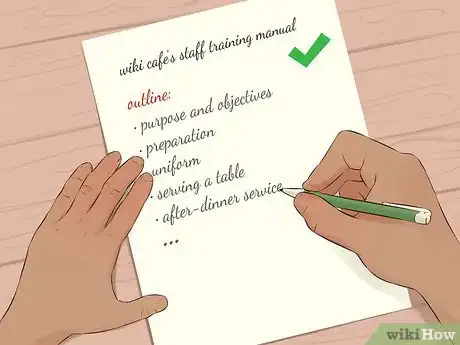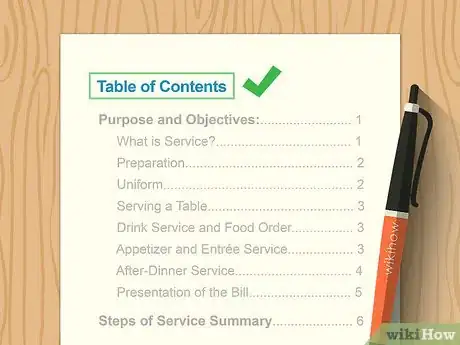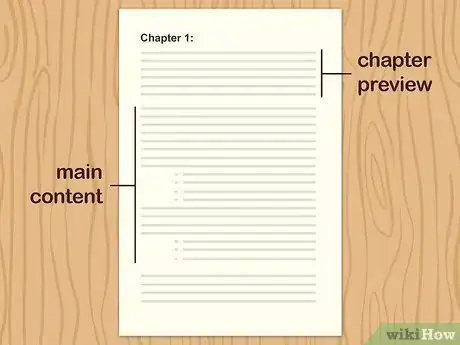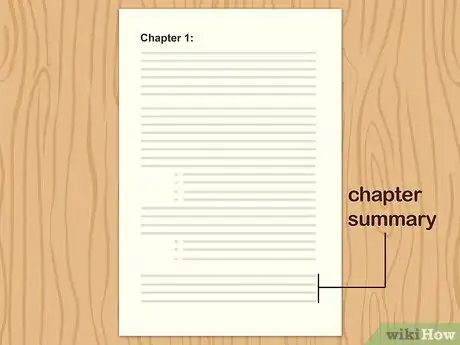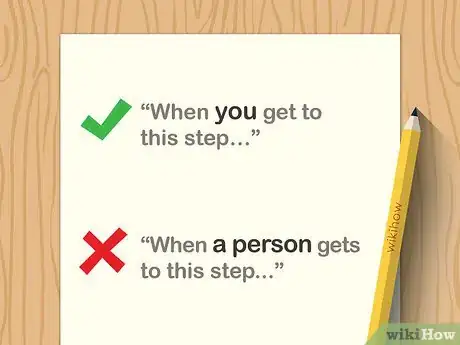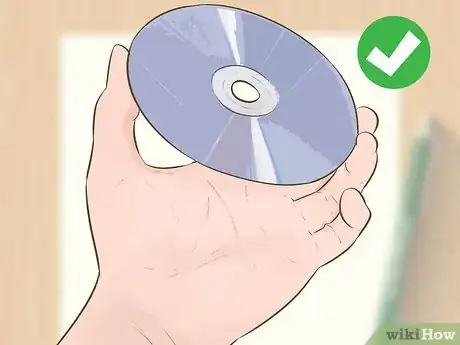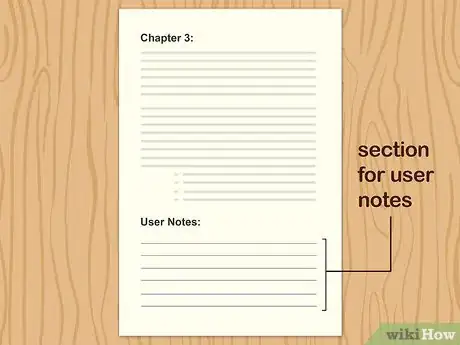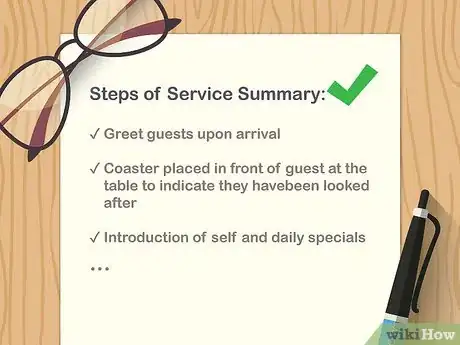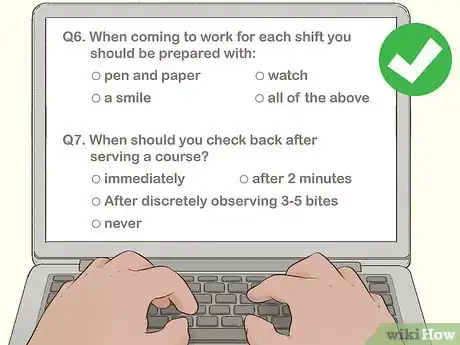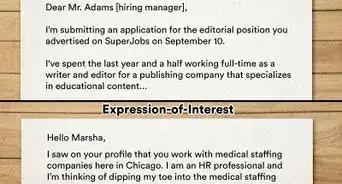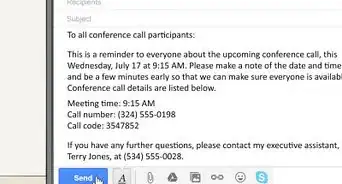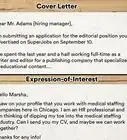This article was co-authored by Joe Simmons. Joe Simmons is a Corporate Trainer based in West Palm Beach, Florida. Joe specializes in operations management, leadership, learning and development, and employee training to help employees become high-performing teams. He holds a Bachelor’s degree in Marketing from The University of South Florida. Joe’s coaching has helped numerous organizations with employee retention, revenue growth, and team productivity.
There are 7 references cited in this article, which can be found at the bottom of the page.
wikiHow marks an article as reader-approved once it receives enough positive feedback. This article received 11 testimonials and 80% of readers who voted found it helpful, earning it our reader-approved status.
This article has been viewed 195,092 times.
Training manuals are an important part of teaching new employees about a company, or old employees about new systems or programs. The exact process for writing a training manual may be dictated by the industry it is for, but there are some general things you can do to help your employees get the most out of the manual. You should double check that you have all the information you need before you start, write with your audience in mind and try to make it easy for them to learn, and include some extra materials to make the information easier. Your manual will benefit if you include images and graphics, blank space for notes, quizzes to review what people learn, and checklists of important tasks.
Steps
Assembling the Information
-
1Review and compile the information the manual needs to cover. Never write a training manual from memory. Go through the various processes and knowledge points that your manual is going to cover and be sure you are clear on everything. Make a list of all the important information and refer to this list as you write the manual, double checking to include it all.[1]
- Even skipping a small step may confuse your users, so pay attention. For example, you could be telling someone how to enter data into a spreadsheet, but you could easily forget to mention “click File to open a new spreadsheet.” Or when describing how to use a piece of machinery, you may forget to mention flipping a certain switch that's vitally important.
- If you don't review everything and you do forget something, users are likely to become distressed because something isn't working right. This is not the outcome training should ever result in.
-
2Outline the flow of the training manual. Use the list you have made and begin to organize the information into a logical sequence of chapters, sections, or parts. You'll most likely begin with the basics and work up to more in-depth concepts.
- Before you write any content, make sure you have a good idea of where all aspects of the manual will fit together. You don't want to mention something from what you think is a previous section if the manual hasn't covered that information yet.
- If you can write self-contained sections that don't build on each other, this may be the right approach in some situations.
Advertisement -
3Include a table of contents and an index. Even if the manual is meant to be read straight through from start to finish, these navigational sections will help people when they need to go back to refresh their memory and study what they learned. The table of contents should have all the chapters titles and any section headings it makes sense to include. Make the index as thorough as possible, giving people lots of things to find throughout the manual.
- Word processing programs often have templates for these types of documents. You can also find helpful resources online for how to structure these elements.
-
4Write informative chapter previews. At the beginning of each chapter or section, write 2-3 paragraphs that outline what will be covered in that part of the manual. You could include a list of objectives for the section, keywords that are good to focus on, and mention quizzes or activities that will be included.
- Chapter titles should help people know what they'll find, but they should be able to skim the preview and make sure the chapter has what they need to know.
-
5End each chapter with a summary. It is always helpful to wrap up and review what has been covered in a chapter. It's a summary, so you can't mention everything. Try to highlight what you see as being the most vital information that people should take away from the chapter.
- You can mention the objectives again to give people the chance to take stock of whether or not they learned what they were supposed to.
-
6Create a group or task force to help you write the manual. You'll succeed more easily at writing a training manual if you have people to help you do it. You need people to check for errors as you go, make sure that the content is understandable, and help you consider all aspects of what you are training for. Plus you can delegate some of the work and distribute it evenly.
- If you can't have a group to help through the whole process, at least consider asking people a few things at different points as you go to get second opinions.
Accommodating Your Users
-
1Write for and to your audience. Make sure you are clear on who the audience is. Consider if they have a knowledge base or are starting completely fresh. This will give you an idea of how broad or specific you need to be throughout the manual. When it makes sense, write directly to the audience saying, “When you get to this step…” rather than something like, “When a person gets to this step.”[2]
- If you are training employees on a brand new software that no one has seen, it's safe to assume they won't know anything. If you are training for sales techniques at a clothing store, you don't need to explain what pants and shirts are.
- Don't patronize people by over explaining simple concepts, but also don't assume they know something that they may not know. It is a good idea to explain the benefits of following the manual.
-
2Include problem-solving scenarios and discussion topics. Not everyone can learn by reading 20 pages of text, so include ways for users to apply what they read and get hands on experience. Give a scenario and ask the reader to solve a problem of some kind. Allow for discussion and collaboration among trainees. You want to cater to different learning styles so the manual is useful for as many people as possible.[3]
- You can't fit every employee perfectly, but if you only use one approach you aren't likely to get through to very many at all. The goal of the training manual is to help employees learn what they need to know, so aim to make it easy for as many people as possible. Tailor it to the day-to-day activities.
- Be sure to stay focused on the topic at hand; avoid introducing concepts, ideas and instructions that are not related to the topic, workplace or field being covered.
-
3Enhance the manual with videos or audio recordings. If you are writing a printed manual, consider whether or not you can give trainees access to extra materials, such as videos or audio recordings. For learners who would struggle to read an entire manual, you can work to ensure they still learn what they need to. Many times the written manual will be the primary training tool, but a few extras may make a big difference.[4]
- This may be affected by the type of content your manual includes and may not be applicable in all cases. Take stock of the specifics of your manual and judge whether or not extra materials could be created.
Testing the User's Understanding
-
1Include a section for user notes. As you are writing each section of the manual, people using the manual will be trying to take in a lot of information. When you purposefully include blank spaces for writing notes, you encourage the users to jot down what they are learning. This will increase the amount of information that they retain.[5]
- Notes sections would be good alongside most sections of text, but you could also make a separate notes section at the end of chapters and the end of the whole manual. This helps people avoid having separate notebooks that they might lose track of.
-
2Utilize images and graphics. Any time you can show the reader something visual, it can have an impact on how much they understand. You don't want to clutter your manual with too much, but use visuals if you can. You can have screenshots of steps in computer work. You can include charts of important data. Pictures of tools or machinery the person will use are good, too.
- There really is no limit to what types of visual aids you could include, so think about what you are training for and what would be most helpful for the user to see.
-
3Include checklists of important steps. For many manuals, you'll be detailing the steps of various processes, and checklists are a great way to sum things up. When a user needs to refer back to a section that includes specific steps, the checklist will refresh their memory and can be checked much more quickly than multiple paragraphs of text.[6]
- It might even be useful to make these pages easy to tear out so users could keep the checklist handy at later times when they are working on tasks.
- Checklists could include materials needed, sections for before, during, and after completing a task, or how to evaluate work once it is done.
-
4Include activities and quizzes that measure learning. You want to ensure that users of your manual are learning as they go, so write up small tests of their knowledge. Include the answers in a separate spot so they can check how they did. You could have multiple choice questions, fill in the blank and matching, or scenarios for problem solving.[7]
- These would be separate from any official testing you would have employees take after training is complete. The purpose would be to help them along the way in gauging how much their are learning.
Community Q&A
-
QuestionWhat software do you recommend for creating training manuals?
 Community AnswerIf you want to create a training manual, you could use any word processing software, like Microsoft Word, Pages (Mac) or Google Docs.
Community AnswerIf you want to create a training manual, you could use any word processing software, like Microsoft Word, Pages (Mac) or Google Docs.
References
- ↑ http://www.techrepublic.com/article/tips-for-writing-effective-training-material-for-beginners/5077224/
- ↑ http://blog.convergencetraining.com/tips-for-writing-instructional-and-training-material
- ↑ http://www.businessballs.com/training.htm
- ↑ http://ecmweb.com/content/ten-tips-effective-training-program
- ↑ https://www.zanebenefits.com/blog/include-these-6-tips-for-the-best-training-manual
- ↑ https://pos.toasttab.com/blog/restaurant-training-manual
- ↑ https://elearningindustry.com/12-elements-training-manual-template
About This Article
To write a training manual, start by compiling all of the information the manual needs to cover and then determining whether dividing it into chapters, sections, or parts would work best. Then, organize the information and create a table of contents and index so your manual is easy to navigate. You'll also want to write up a brief 2-3 paragraph preview for the beginning of each section so readers know what to expect. Also, conclude each section with a summary that wraps up and reviews the information the reader learned. To learn how to include quizzes, graphics, and checklists in your manual, keep reading!

